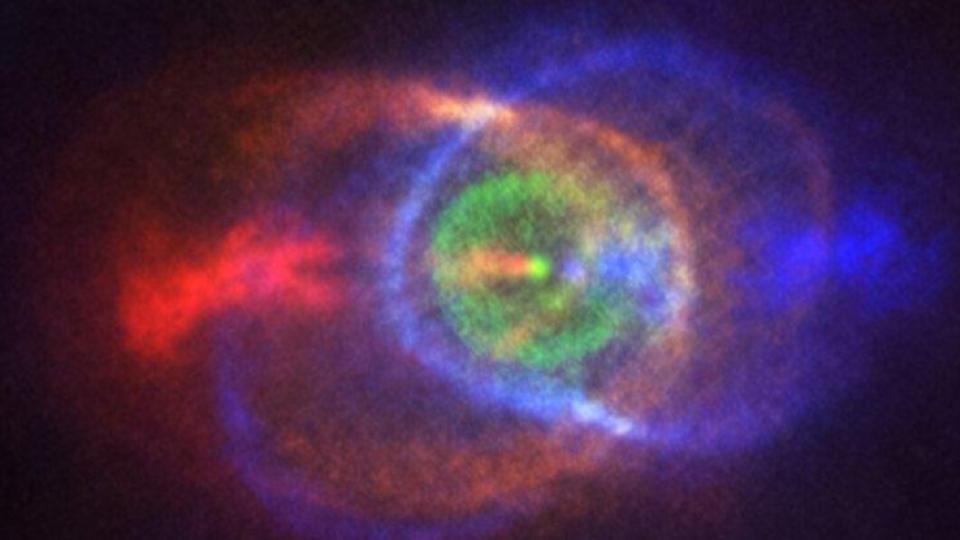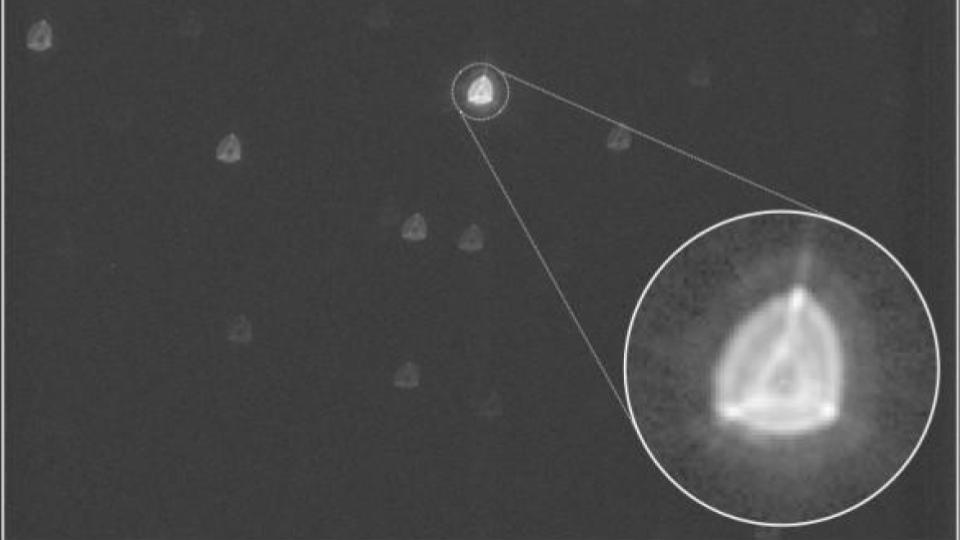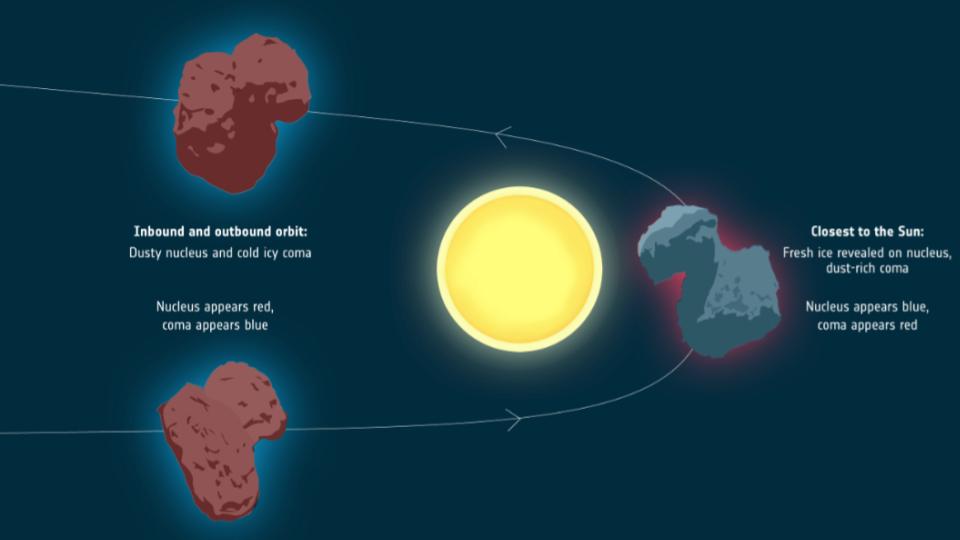Today’s main story looks at the weird star HD 101584 and explains its odd looks with a stellar merger gone berserk. Additional news includes CHEOPS first light images, and new results from Rosetta mission about comet C/G 67P and its orbital color changes.

One of the best parts about covering astronomy news is seeing how ideas change, year after year. When I first started astronomy, we were still very uncomfortable with the idea that stars might be merging into something new. I remember people struggling with the idea that unusual blue stars in globular clusters, called blue stragglers, might be merged stars that appeared younger than they actually were due to the merger event. Over the decades, more and more observed stars and events have been attributed to mergers. One of the main explanations for R Coronae Borealis stars is the merger of 2 white dwarf stars, where we see gravitational waves coming from merging black holes, merging neutron stars, and every combination in-between. These classes of observations are making it clear that mergers aren’t entirely unusual, and as we look to try and explain oddball systems, we need to consider stellar mergers as a possible explanation.
We recently covered supernova SN2006gy here on the Daily Space. This was an oddball explosion that was one the the brightest supernovae ever recorded, but appeared to be a type 1a supernova driven by an exploding white dwarf. In trying to explain this weird system, astronomers figured out that a white dwarf had fallen into a giant star, and exploded while shredding the giant star’s atmosphere.
Today, we get word that the weird star HD 101584 can also be explained as a stellar merger. First remarked upon in 1995, this peculiar supergiant is surrounded by unusual layers of material. This system was recently studied with the Atacama Large Millimeter array, and with its added detail, astronomers led by Hans Olofsson were able to resolve odd jets streaming from this evolved star. Jets aren’t normal for evolved stars, and the best way they found to explain this system is the giant star consuming a small nearby companion as it evolved.
This star started out not too different from our own Sun, and – like our own Sun will do someday – as it evolved it expanded out to have a radius roughly the size of Mars’ orbit. While our Sun will only eat planets, this HD 101584 had a small star snuggled up in a small orbit, and as it expanded it ate this small star. This did not go well for anyone involved. According to the press release, “This caused the red giant to go absolutely berserk. It erupted prematurely, explosively ejecting its gas layers, and is currently in the process of exposing the naked core. It was total carnage – leaving behind a gorgeous complex nebula of star guts, carved out by the smaller star’s death spiral.” We couldn’t find a copy of the ALMA data to share, but one of the cool things they found is this system has polar outflows and a figure 8 of dust and gas.
This system shows that spectacular beauty can come out of horrible destruction. It also shows us that while space is mostly empty, stars can still find each other and merge in explosive ways.

As we build more and better telescopes, our ability to find and understand these kinds of unusual systems will only get better. Not all these telescopes will take beautiful images, however, and the initial images sent back from the European CHEOPS space telescope will leave you wondering if the telescope works right, unless you know how the telescope is being used. In mid-December, CHEOPS launched on a mission to determine the size of extrasolar planets. This can only be done by very precisely measuring how long it takes for a planet to start passing in front of a star and to then be fully in front of a star. This kind of detailed measurement of brightness is extremely difficult, and it turns out it is even more difficult if your telescope has stars focused perfectly into pin-pricks of light. For this reason, astronomers (including our own Dr Pamela), will sometimes unfocus telescopes to spread light out over more pixels. CHEOPS is designed to defocus stars across dozens and dozens of pixels. The odd pattern that can be seen in its images reflects the optics of this Ritchey-Chretian style telescope, which has a mirror at the front of the telescope that is suspended from 3 arms. You can see an example image on our website, DailySpace.org

Our final story of the day also comes from a spacecraft. In this case, we look back at data from the Rosetta Mission. One of the questions that has puzzled comet scientists is why did Comet C/G 67P look red, with a blue coma, when it was far from the sun, and then look blue with a red coma near the sun. Well, as is so often the case, dust is to blame. When the comet is cold and far from the sun, dust settles to the surface, making the dusty surface appear redder. When the comet is near the sun, the surface gets heated up and sublimates from solid to gas, with the sublimated ice carrying the dust away from the surface. This leads to a dusty coma around the comet, and a pristine blue-ice surface to the comet, which is rich in magnesium silicate. As the comet moves away from the Sun and cools, the coma refreezes, taking the dust with it, making the comet appear red again.
It’s kind of awesome that more than 3 years after Rosetta ended its mission, we’re still making new discoveries with its data. We look forward to seeing what more this mission has to discover.
<———————>
And that rounds out our show for today.Thank you all for listening. The Daily Space is written by Pamela Gay, produced by Susie Murph, and is a product of the Planetary Science Institute, a 501(c)3 non profit dedicated to exploring our Solar System and beyond. We are here thanks to the generous contributions of people like you. Want to become a supporter of the show? Check us out at Patreon.com/cosmoquestx


 We record most shows live, on Twitch. Follow us today to get alerts when we go live.
We record most shows live, on Twitch. Follow us today to get alerts when we go live.